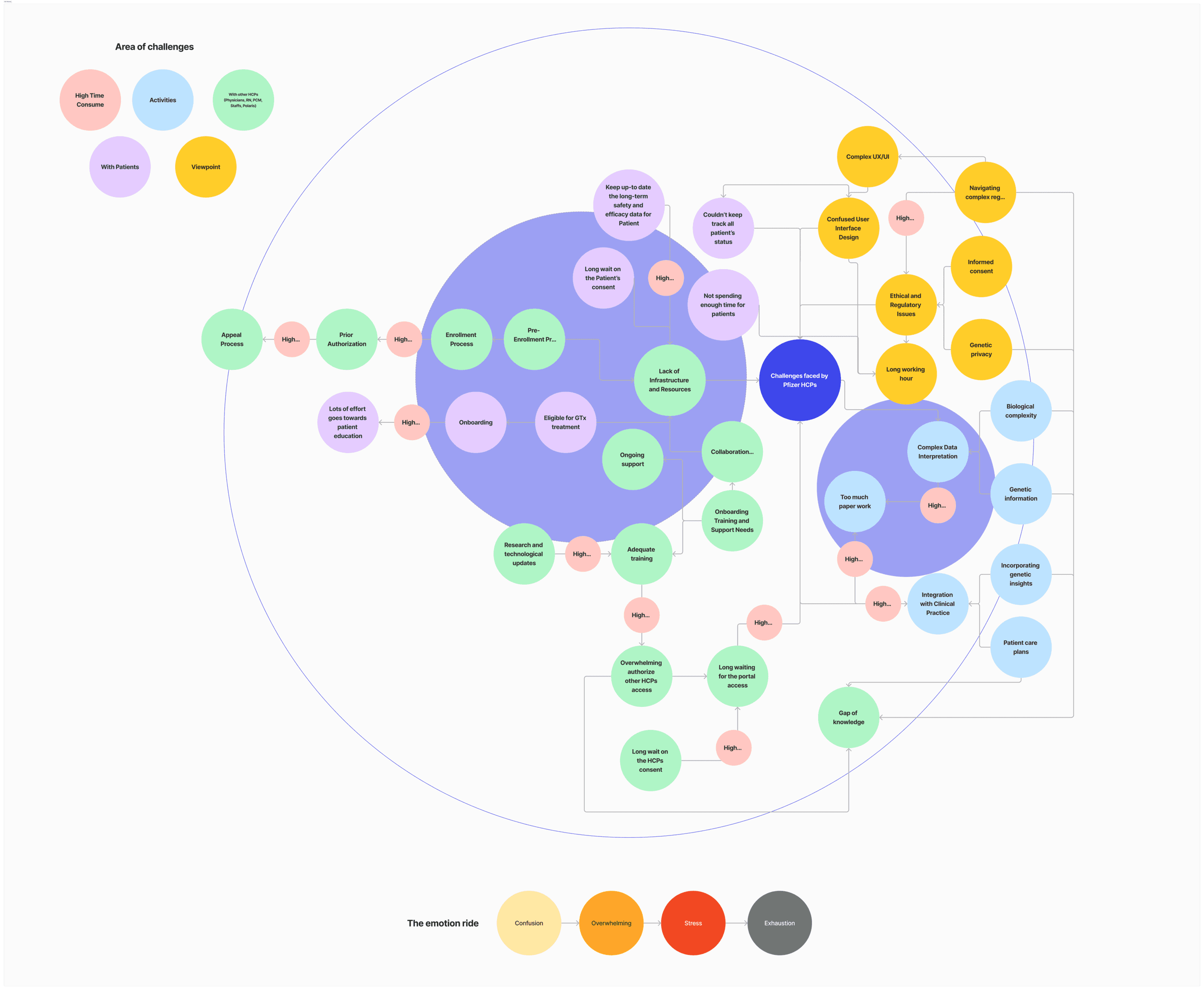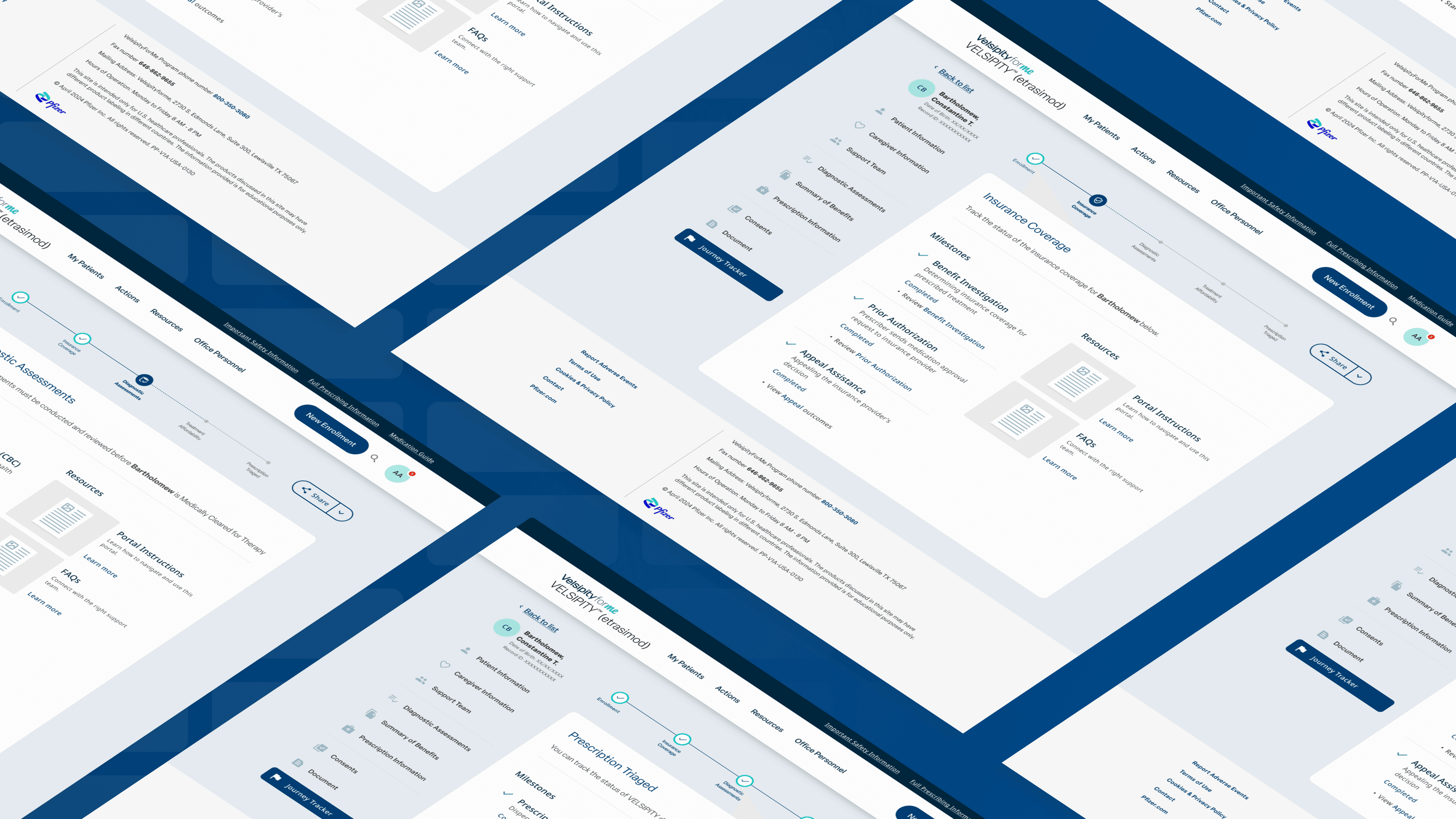
🔒 Design display was limited due to project-specific privacy constraints.
⟡ Highlight skillsets
Observe the current Healthcare Landscape
77% of patients
Expect their healthcare providers to offer digital tools such as treatment tracking, appointment scheduling, and secure messaging, making it crucial for Pfizer to offer a modern, user-friendly experience.
66% of physicians
Report that administrative tasks, such as managing patient data and prescriptions, take up too much of their time, which is why an efficient portal can dramatically streamline workflows for HCPs.
85% of healthcare executives
Agree that digital transformation is critical to improving patient outcomes, highlighting the necessity for Pfizer to integrate tools that allow for real-time treatment tracking and communication.
$1.3 billion annually
is spent by pharmaceutical companies on compliance and regulatory costs, making it essential for Pfizer to have a centralized platform that simplifies access to training materials and compliance documentation for employees.
Project Scope and Goals
The scope of the Pfizer Healthcare Portal project included the design and development of portals for three distinct user groups:
Healthcare Professionals (HCPs) – Providing tools to track patient treatments, manage prescriptions, and access educational content on new therapies.
Patients – Enabling patients to monitor their treatment journey, receive critical updates, and securely communicate with their healthcare providers.
Pfizer Employees – Offering streamlined access to internal data, training materials, and compliance-related documentation.
Strategic Approach
The aggressive timelines and changing project dynamics required us to shift to a lean design process.
Instead of separating the Discovery and Define phases, we combined them into a single, rapid phase. This meant moving from research to problem definition swiftly, allowing us to progress quickly without extensive user story refinement.
As a Senior Product Designer, I led the design of key components, from user strategy to prototyping. We adopted a lean, fast-paced design process to meet aggressive timelines, delivering intuitive, user-friendly interfaces that allowed HCPs to track patient treatments, while patients monitored their health journeys.
Despite complex challenges like incomplete user stories and tight deadlines, we built a scalable and secure platform that met the needs of diverse users.
Results and Impact
Early metrics have shown strong adoption among healthcare professionals (HCPs) and patients. Some key anticipated outcomes include:
Increased Adoption Rates
While not all project specifics can be shared openly, I'm open to discussing further in private for any potential hiring or partnering opportunities.
Let's connect
Or keep going

